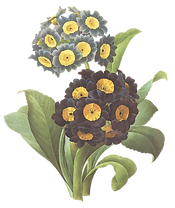Hazlitt Essay On Poetry In General Pdf
- sarahstephens1990
- Aug 12, 2023
- 3 min read
For relief from all that weighed on his mind, Hazlitt became a passionate player at a kind of racquet ball similar to the game of Fives (a type of handball of which he was a fan) in that it was played against a wall. He competed with savage intensity, dashing around the court like a madman, drenched in sweat, and was accounted a good player. More than just a distraction from his woes, his devotion to this pastime led to musings on the value of competitive sports and on human skill in general, expressed in writings like his notice of the "Death of John Cavanagh" (a celebrated Fives player) in The Examiner on 9 February 1817, and the essay "The Indian Jugglers" in Table-Talk (1821).[87]
Hazlitt Essay On Poetry In General Pdf
Download File: https://ssurll.com/2vA0Ze
Some essays blend Hazlitt's social and psychological observations in a calculatedly thought-provoking way, presenting to the reader the "paradoxes" of human nature.[90] The first of the collected essays, "On the Love of Life", explains, "It is our intention, in the course of these papers, occasionally to expose certain vulgar errors, which have crept into our reasonings on men and manners.... The love of life is ... in general, the effect not of our enjoyments, but of our passions".[91]
One idea that particularly bore fruit was that of a series of articles called "Table-Talk". (Many were written expressly for inclusion in the book of the same name, Table-Talk; or, Original Essays, which appeared in different editions and forms over the next few years.) These essays, structured in the loose manner of table talk, were written in the "familiar style" of the sort devised two centuries earlier by Montaigne, whom Hazlitt greatly admired.[129] The personal "I" was now substituted for the editorial "we" in a careful remodulation of style that carried the spirit of these essays far from that of the typical eighteenth-century periodical essay, to which he had more closely adhered in The Round Table.[88] In a preface to a later edition of Table-Talk, Hazlitt explained that in these essays he eschewed scholarly precision in favour of a combination of the "literary and the conversational". As in conversation among friends, the discussion would often branch off into topics related only in a general way to the main theme, "but which often threw a curious and striking light upon it, or upon human life in general".[130]
In these essays, many of which have been acclaimed as among the finest in the language,[131] Hazlitt weaves personal material into more general reflections on life, frequently bringing in long recollections of happy days of his years as an apprentice painter (as in "On the Pleasure of Painting", written in December 1820)[132] as well as other pleasurable recollections of earlier years, "hours ... sacred to silence and to musing, to be treasured up in the memory, and to feed the source of smiling thoughts thereafter" ("On Going a Journey", written January 1822).[133]
Week 13Bible: Ezekiel 37-39; Colossians 1, 2; Psalm 119:1-19; Proverbs 22:1-14The Cost of Discipleship ch 1 (Costly Grace)Gilbert's History of the 20th Century pg 264-278 of ch 7 1940-1941 (14 pgs) OR Modern Times first third of ch 10 pg 341-351 (10 pgs)Mein Kampf Book 1 ch 1, 2Here is Your War ch 1, 2 (or other Ernie Pyle book)The Men Behind Hitler Schreibner PrefaceHiding Place ch 1 Speech: Franklin Roosevelt's Pearl Harbor address, December 8, 1941 "a day that will live in infamy"Amusing Ourselves to Death ch 1 "The Medium is the Metaphor"Short essay about the Trial of NurembergHazlitt Economics in One Lesson: ch 13. "Parity" PricesEssay: Introduction to Athanasisus' Incarnation by C. S. Lewis, 1944 (Just the introduction to the book)The World: Life and Travel by Jan Morris pgs 145-153 (ch 13)Invitation to the Classics: T. S. Eliot - Four QuartetsThe Chosen by Chaim Potok ch 1Brideshead Visited Prologue, Book I ch 1Choose poetry from an anthology of modern poetryA Thousand-Mile Walk to the Gulf by John Muir ch 1On Writing Well ch 16The Thinking Toolbox by Nathaniel and Hans Bluedorn lesson 12Janson's History of Art - work through IV: 5 20th Century Architecture during this term 2ff7e9595c



Comments